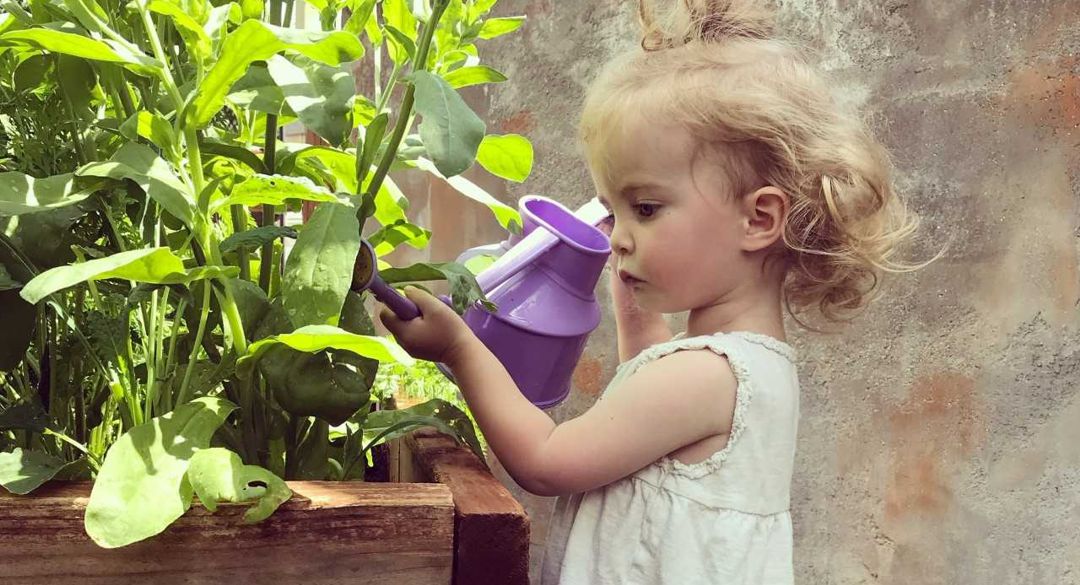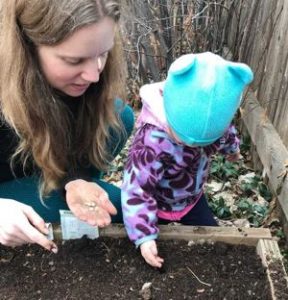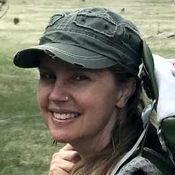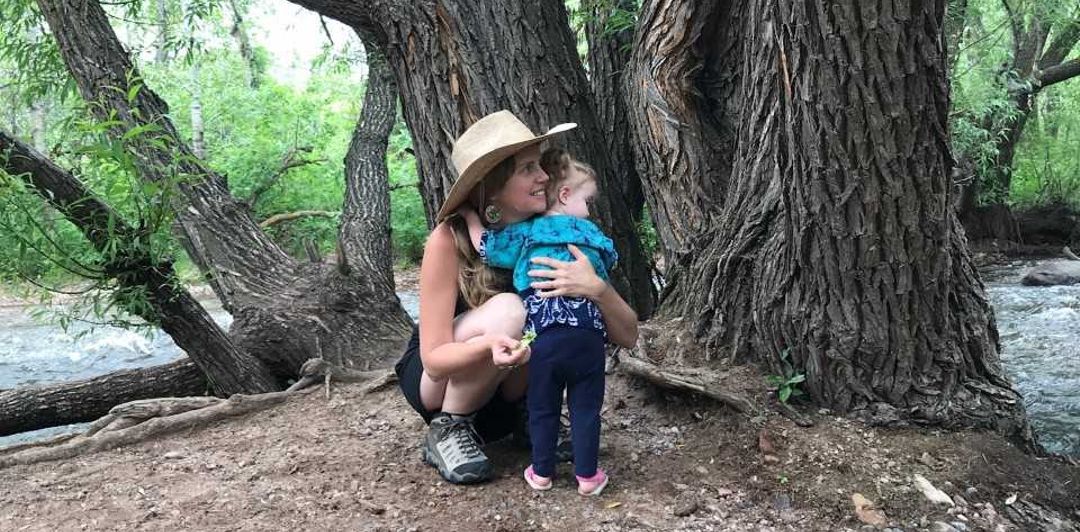
CONFESSIONS
I admit it. I use Ziploc bags. There. I said it. Not because I want to but because they’re so dang convenient and cheap. You know what else? My daughter has only been in a cloth diaper about 5 times. Maybe. That’s right. I’ve used disposable diapers for 2.5 years. The good kind, no chemicals, more biodegradable but still disposable. AND… I use baby wipes. The kind without chemicals but still disposable. And while we’re at it I’ll just throw in that I bought plastic containers for her lunch. BPA-free, but plastic. And one last zinger – I’m a terrible recycler! I do recycle, I just don’t take the time to sort or clean properly. I’m not a complete recycling failure, I’d give myself about a C-. But we have city-wide composting so I think I redeem myself in that department by being about a B+ composter.
Ok. You get it. See, I never thought I would make these choices before becoming a mother. I care very much about this incredible planet and all of the beings that depend on it for life. I used to shop at the farmers market once a week and bought things in bulk with my own containers. I would ride my bike to a co-working space, walk to my yoga class, I even took a 2-month Permaculture Design Course. Before having my daughter, I researched organic cloth diaper brands, how to make homemade baby wipes, priced out silicone and stainless-steel food containers, beeswax container covers, chemical-free rugs, mattresses, organic clothing… I was determined that not a single chemical would touch my baby. Are you exhausted yet? I was.
Every parent’s journey into parenthood is bumpy in some way. I was in labor for 4 days, had a tiny 4 lb. 11 oz. full-term baby that everyone was concerned about, a baby that wouldn’t latch and never learned to breast-feed so I exclusively pumped for 19.5 months, and now I have a toddler with an oral-motor skill delay who struggles to eat enough to gain weight. Needless to say, becoming a plastic-free house and making my own baby wipes dropped a bit on my list. It also became clear that I needed to limit my working hours to spend as much time with our daughter as possible to help her learn to use her tongue and jaw properly, with the guidance of a team of practitioners. With limited income, buying expensive silicone snack pouches wasn’t an option. With limited time and a strict eating and pumping schedule, making it to the farmers market just didn’t happen as much as I would have hoped.
I felt like I wasn’t being a good example for my daughter, I was failing at teaching her about making choices that supported the health of the planet and all of us on it. Thankfully, at some point, I realized that thinking about what I couldn’t do, or wasn’t doing well, wasn’t sustainable for me and my family. I had to focus on what I WAS doing well, I had to focus on what I had the resources and capacity to achieve.
And that’s when I unearthed a gem of wisdom. I shifted from a sense of lack and guilt to one of abundance and gratitude for what was already right in front of me, for what I was surrounded by every day – nature. What I wanted to teach my daughter about I could access right from my own backyard – I wanted to teach her how and why to love nature. I realized that I didn’t need to buy the “right” things to teach my daughter to care for the Earth. I needed to teach her how and why we want to take care of the Earth in the first place.
As an herbalist, nutritionist and lover of clean water, sunshine and fresh air, I knew that loving nature was something I could certainly teach my daughter about. And that’s where it all begins anyways, right? When you love something, you want to care for it. When you understand the importance of medicinal herbs and bees, you want to protect them. And teaching my daughter about the wonder and beauty of the natural world has become my greatest honor. I can think of no better way to leave this world a better place than to help teach the next generation how to appreciate Mother Nature and why she’s so important to protect.
CULTIVATING A RELATIONSHIP WITH MOTHER NATURE
We started with seeds. Lots of seeds. I started to teach her about the magic of growing pea pods from a tiny dried up pea. I let her eat spearmint and catnip leaves, freshly picked and full of life. She watches me say thank you to a plant before harvesting its’ abundance. I’m teaching her how to offer water if a plant is thirsty and compost if the plant is hungry. We talk about the bees and butterflies and how we need them to pollinate the plants so that we can have fruits and vegetables. We learn about worms and how they help to nourish our soil. I remind her – often – how important it is to be mindful of how much water we use.
In the car on the way to school, I always comment on how beautiful the sky is or how awesome the snow-capped mountains look. We watch for hawks flying overhead. On our hikes, we pause as eagles soar overhead, as wild turkeys gobble through the forest and a tiny chipmunk scurries up a tree. We talk about the changing seasons, gathering acorns and colored leaves and rocks. We make nature art, like flower crowns and mandalas, with fresh flowers from the garden. We touch, see, hear, smell, taste… and honor.
Instead of feeling exhausted by the guilt of making all the “wrong” decisions and not being a good example for my daughter, I felt exhilarated by the opportunity to teach my daughter how and why to love the Earth, and all of the beings we share it with. The experiences in nature don’t always have to be epic. Learning to love Mother Earth doesn’t have to cost a thing. But the time we spend cultivating that connection to the natural world is priceless, and those strong connections are what will most likely save us all.
 TEACHING YOUR CHILD TO LOVE NATURE
TEACHING YOUR CHILD TO LOVE NATURE
To recap, here are 5 simple, yet powerful ways to cultivate a relationship with the natural world without leaving your backyard that won’t cost you a dollar. Well, maybe a couple dollars for a packet of seeds, but that’s really it!
- Show them how to plant a seed
- Create awareness using the 5 senses – smell, taste, see, touch and hear as many things in nature as you can each time you take a walk, play in the backyard, visit the park
- Watch and listen for birds, bees and other wildlife
- Talk about the seasons – collect nature treasures and create art
- Teach them how to show gratitude – appreciate a sunset, thank the tree for the air we breathe, thank the plants for the food and medicine they provide, water the garden with care, help a worm find its way back to the soil
For more ideas on how to spend meaningful time in nature with children, check out this 100 Things to do Before You’re 12 list from Generation Wild.
And there’s still time to join the 1,000 Hours Outside 2020 Challenge here.
Join the Plant Seed Day movement – pledge to plant on March 19!
 Amy Malek, CCN, CCH, INHC is a Certified Clinical Nutritionist, Certified Clinical Herbalist, Integrative Nutrition Health Coach, Flower Essence Practitioner, Permaculture Consultant and Certified Yoga and Meditation Instructor. Amy’s passion for art, plants, sustainability and holistic health have led her on a professional journey full of unique opportunities. Over the past 24 years, she’s weaved together a career in Design and Marketing with her passion for wellness and herbal medicine. She discovered her love for plants while traveling in India and Thailand, and in the Sonoran Desert while living in Tucson, AZ. She has been studying plants of the Mountain West and Southwest for 10 years. Her many teachers include Paul Bergner, Rosemary Gladstar, Dr. Aviva Romm, Lisa Ganora, Kat MacKinnon, Erin Smith, John Slattery and Charles Kane. Her career is divided between Holistic Health, Graphic/Web Design and Marketing/Social Media Consulting. She is currently the Social Media Coordinator for WishGarden Herbs. She lives in Boulder County, CO. She enjoys wildcrafting, growing her own medicinal plants and making a variety of herbal home remedies. You can learn more about her practice on her website: Whole Heart Wellness
Amy Malek, CCN, CCH, INHC is a Certified Clinical Nutritionist, Certified Clinical Herbalist, Integrative Nutrition Health Coach, Flower Essence Practitioner, Permaculture Consultant and Certified Yoga and Meditation Instructor. Amy’s passion for art, plants, sustainability and holistic health have led her on a professional journey full of unique opportunities. Over the past 24 years, she’s weaved together a career in Design and Marketing with her passion for wellness and herbal medicine. She discovered her love for plants while traveling in India and Thailand, and in the Sonoran Desert while living in Tucson, AZ. She has been studying plants of the Mountain West and Southwest for 10 years. Her many teachers include Paul Bergner, Rosemary Gladstar, Dr. Aviva Romm, Lisa Ganora, Kat MacKinnon, Erin Smith, John Slattery and Charles Kane. Her career is divided between Holistic Health, Graphic/Web Design and Marketing/Social Media Consulting. She is currently the Social Media Coordinator for WishGarden Herbs. She lives in Boulder County, CO. She enjoys wildcrafting, growing her own medicinal plants and making a variety of herbal home remedies. You can learn more about her practice on her website: Whole Heart Wellness
